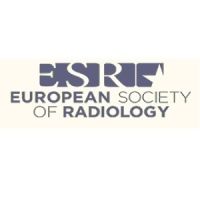A survey of
about 300 healthcare professionals in Canada found that radiologists and
technologists generally had better knowledge than referring physicians when it
comes to radiation dose levels and potential risk.
The aim of the study, published in the Journal of Medical Imaging and Radiation Sciences (JMIRS) was to identify that there is ionising radiation and associated risk from many medical imaging examinations as diagnostic tools, especially computed tomography (CT). What was concerning was that in the case of physicians and technologists, knowledge was better among those who use CT than those who do not.
Using a survey of 308 medical professionals, Researchers from the University of Saskatchewan in Canada, investigators found that a high rate of healthcare providers – 73 percent of physicians, 97 percent of radiologists, and 76 percent of technologists – in fact had correctly identified that there was an increased cancer risk from one abdominal-pelvic CT.
In the other extreme, however, only 18 percent of physicians, 28 percent of radiologists, and 22 percent of technologists were found to have correctly identified the dose level in relation to chest x-rays. Furthermore, although 48 percent of physicians, 78 percent of radiologists and 63 percent of technologists either correctly estimated or overestimated this dose, many of the respondents still underestimated the dose level.
“Underestimating radiation dose from a CT scan is more concerning than knowing the exact dose level, particularly when it is a vast underestimation, as this may lead to minimisation of the risk estimate when considering a test,” said the study’s lead investigator David Leswick, MD, FRCPC, Department of Medical Imaging, College of Medicine, University of Saskatchewan.
Radiation exposure issues are of growing concern as a significant number doctors continue to order CT scans with increasing frequency. In Canada alone, there were an estimated 4.4 million CT scans conducted in 2011-2012, data from the study suggested. Measured in millisieverts (mSv), the average radiation dose from an abdominal-pelvic CT is 10 mSv, compared to 0.02 to 0.2 mSv from one chest x-ray, meaning that a radiation dose from a CT scan is best approximated as between that from 100-250 chest radiographs.
“Although risk from radiation dose levels in the range of medical imaging procedures is small, it is real as evidenced from atomic bomb survivors and nuclear industry workers showing significantly increased risk of malignancy after exposure to doses in the range of diagnostic CT,” Dr. Leswick said in his remarks.
“The risk of fatal malignancy may be as high as one in 1000 for a 10-mSv exposure (which is the estimated dose of an abdomen-pelvis CT). This risk is significant on a population basis, with up to two percent of cancers in the U.S. population possibly attributable to CT,” Leswick concluded.
The survey also indicated that 93 percent of respondents were interested in radiation dose feedback when considering ordering a CT scan. Automated dose calculation software and radiology information systems can be integrated into electronic ordering, which would give doctors immediate access to information when considering ordering a scan.
Another aspect highlighted by the survey was some confusion regarding radiation exposure from magnetic resonance imaging (MRI) and ultrasound. MRIs and ultrasounds do not employ ionising radiation and yet 20 percent of physicians, 6 percent of radiologists, and 7 percent of technologists attributed radiation exposure to MRIs and 11 percent of physicians, none of radiologists, and 7 percent of technologists believed an ultrasound used radiation. “Belief that ionising radiation is utilised by ultrasound and MRI is troubling as it may result in underutilisation of these imaging modalities because of unfounded radiation concerns,” added Dr. Leswick.
While CT scans are considered to be lifesaving diagnostic tools, they also present a possible risk if they are overused or incorrectly implemented. At the same time, it is essential that doctors, in particular, and other healthcare practitioners realise the implications of ordering a CT scan and that patients need to be counseled properly about all available forms of testing and the risk involved in radiation exposure.



























